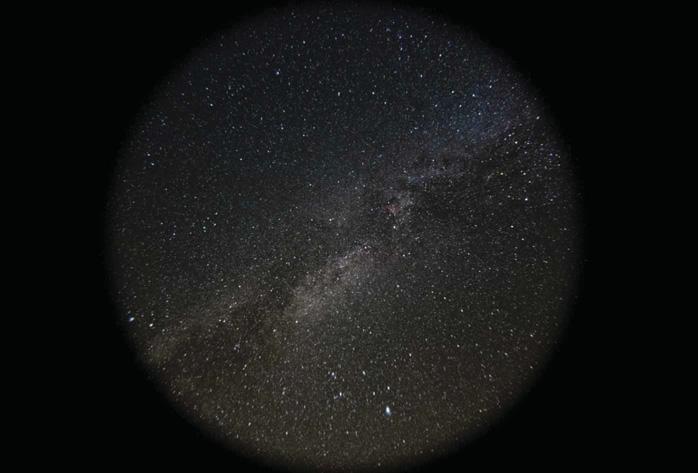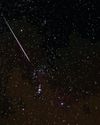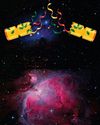Versuchen GOLD - Frei
Image a fisheye Milky Way
BBC Sky at Night Magazine
|August 2023
Ultra-wide-angle lenses capture our Galaxy crossing the whole sky. Here's what to consider

The night sky can be breathtaking, especially when it contains bright views of the Milky Way from a darksky location. But what's the best way to capture the entire stretch of the night sky? There are several methods, but as ever compromises have to be made.
A camera with an interchangeable lens system such as a DSLR or mirrorless camera gives you the best of all worlds, allowing you to go wide-angle or mid-angle. A wide-angle lens has a focal length of 17mm or less, a mid-angle is 18-40mm. Anything over this is getting in too close to the subject to be considered all-encompassing.
If you choose a mid-angle focal length, you'll be able to cover a decent portion of the Milky Way, but you'll need to consider mosaicking shots together to cover all of it. However, seemingly perfect shots can then reveal issues such as lens distortion and edge vignetting, so be prepared to put significant time into a Milky Way mosaic in order to get something that looks natural.
An alternative is to use a wide-angle lens, essentially capturing most of the visible part of the Milky Way in one fell swoop. It seems an obvious choice to reduce workload, but wide-angle lenses have drawbacks of their own.
As with meteor photography, using a wide-angle lens may seem the ideal route - catching a trail is down to luck, but the narrower the field of view, the less chance of success. So it seems a no-brainer to choose a lens that covers the entire sky in one go.
Diese Geschichte stammt aus der August 2023-Ausgabe von BBC Sky at Night Magazine.
Abonnieren Sie Magzter GOLD, um auf Tausende kuratierter Premium-Geschichten und über 9.000 Zeitschriften und Zeitungen zuzugreifen.
Sie sind bereits Abonnent? Anmelden
WEITERE GESCHICHTEN VON BBC Sky at Night Magazine

BBC Sky at Night Magazine
How to photograph the Geminids
Dramatic meteor photos aren't just down to luck. We show you how to bag one
3 mins
December 2025

BBC Sky at Night Magazine
10 Christmas crackers for your new telescope
So Santa brought you a telescope - what now? Stuart Atkinson sprinkles some cosmic sparkle, with 10 sights to see over one fabulous festive night - from glorious galaxies and planets to glittering star clusters
7 mins
December 2025

BBC Sky at Night Magazine
10 years of reusable rockets
Ben Evans charts the rise of multi-flight spacecraft, the tech revolution that's transforming our access to space
6 mins
December 2025

BBC Sky at Night Magazine
SKILLS FOR STARGAZERS
Take great photos of the Milky Way
3 mins
December 2025

BBC Sky at Night Magazine
Smart scopes: from backyard to big science
Home-based stargazers are helping scientists crack some of the Universe's big mysteries - and you can join them. Charlotte Daniels shows us how
6 mins
December 2025

BBC Sky at Night Magazine
FIELD OF VIEW
Forget Instagram – embrace the moment
2 mins
December 2025

BBC Sky at Night Magazine
Q&A WITH A PLANETARY LIFE EXPERT
Saturn's icy moon Enceladus boasts water, heat and organics. Now scientists have discovered it has complex chemistry too. Could it prove to be habitable?
3 mins
December 2025

BBC Sky at Night Magazine
INSIDE THE SKY AT NIGHT
When The Sky at Night joined Curious Cases for a special episode, George Dransfield was there to answer your burning questions. Here she dives deeper into her favourite
3 mins
December 2025

BBC Sky at Night Magazine
Students fix JWST's blurry vision
PhD researchers restore the telescope's ultra-precise imaging - without a spacewalk
1 min
December 2025

BBC Sky at Night Magazine
On a Mission
This is an inspiring tribute to the trailblazing women who shaped NASA's human spaceflight programmes.
1 mins
December 2025
Translate
Change font size
